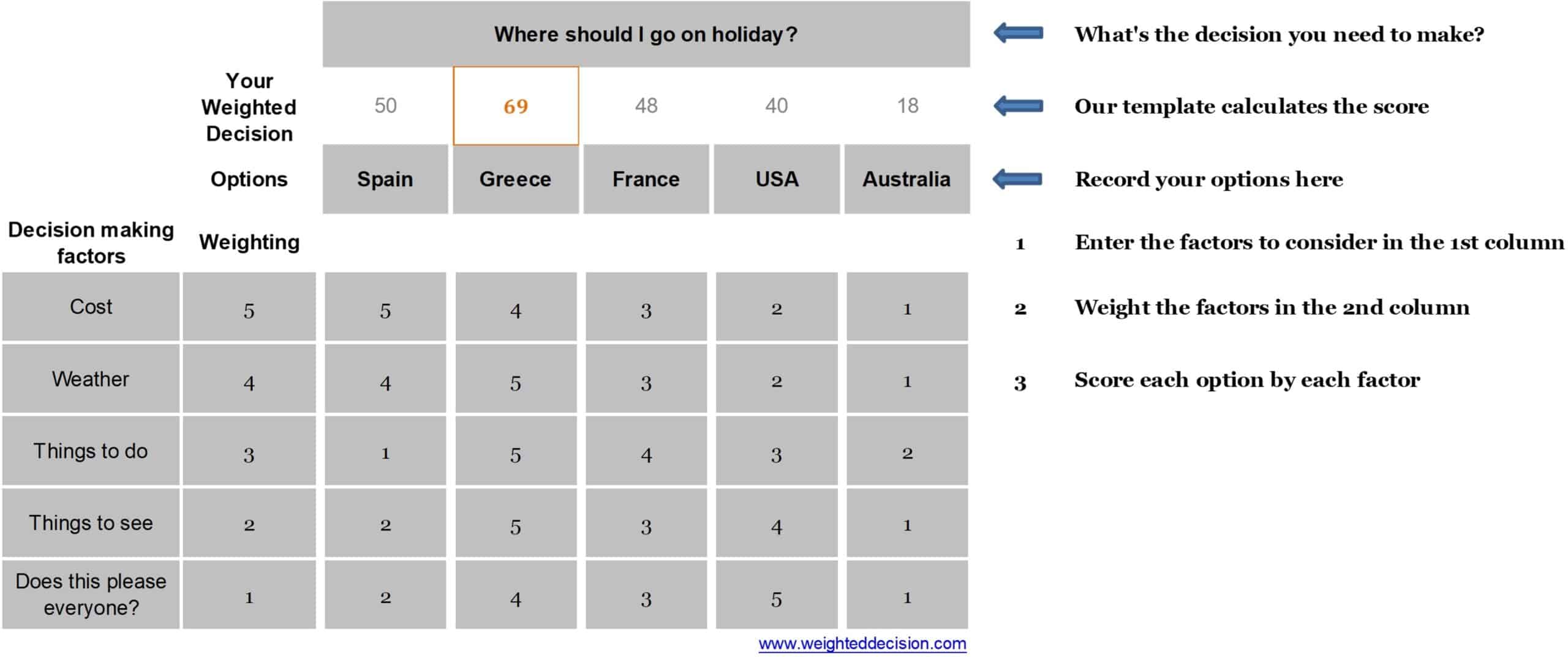What is a Weighted Decision Matrix?
A Weighted Decision Matrix is a decision making tool used when there are several options to choose between. A scoring system is employed in which the factors involved in the decision are weighted so that their importance to one another is relative. Each option is then given a score against each factor and a total score is reached that will indicate what decision should be taken. For example, it can be used in business to decide between different software solutions or at home to help a family decide where to go on holiday.
In the second example, different holiday destinations are the options to be considered. Factors to score the destinations include cost and things to do. You can see this outlined in the pictured example where cost has been heavily weighted and things to do, not so much.
Using a tool such as this matrix gives confidence in a thought through, considered approach to decision making. It can also be used to easily illustrate your thinking process to others when a decision needs to be justified. It is also easy to adjust a matrix should factors or options change to keep everything up to date.
The unique aspect of a decision matrix that makes it so useful is the weighting that has to be applied to the factors. This is not easy and requires a lot of thought and negotiation if completed with others depending on how difficult or important the decision is. Cost, for example would have a low weighting if you happen to be a millionaire, but would be much more heavily weighted if you’re not lucky enough to be rich.
In theory, you could use the decision matrix to score as many different options as you like. That would be time consuming and it is best used to make the final decision from a short list of options. With many options, you may find that you don’t spend an equal amount of time scoring each option and your predetermined prejudices are more likely to come into play.
Factors can also become a very long list and time must be spent choosing differentiated one’s which avoid overlapping. It’s best to weight the factors before beginning the scoring so as to overcome the natural bias we all have to spend less time on the things we ‘know’ are less important. In practice, this bias will exist and it is impossible to ignore it completely. Being aware of it is helpful however.
A weighted decision matrix works best when every factor carries a different weighting. Try to force yourself to give one factor slightly more or less weight even if you find it really hard to differentiate between them. After all, if every factor is equally important, then there is no need to weight them at all.
The weighted decision matrix was invented by Stuart Pugh and is sometimes known as a Pugh matrix. You can download a weighted decision matrix template from our shop.